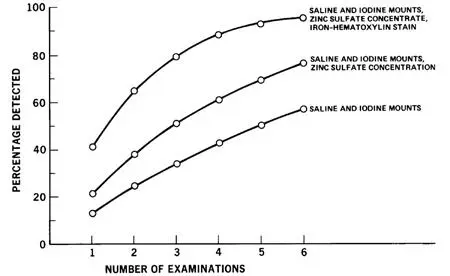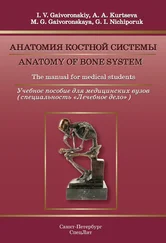Lynne Shore Garcia - Diagnostic Medical Parasitology
Здесь есть возможность читать онлайн «Lynne Shore Garcia - Diagnostic Medical Parasitology» — ознакомительный отрывок электронной книги совершенно бесплатно, а после прочтения отрывка купить полную версию. В некоторых случаях можно слушать аудио, скачать через торрент в формате fb2 и присутствует краткое содержание. Жанр: unrecognised, на английском языке. Описание произведения, (предисловие) а так же отзывы посетителей доступны на портале библиотеки ЛибКат.
- Название:Diagnostic Medical Parasitology
- Автор:
- Жанр:
- Год:неизвестен
- ISBN:нет данных
- Рейтинг книги:3 / 5. Голосов: 1
-
Избранное:Добавить в избранное
- Отзывы:
-
Ваша оценка:
- 60
- 1
- 2
- 3
- 4
- 5
Diagnostic Medical Parasitology: краткое содержание, описание и аннотация
Предлагаем к чтению аннотацию, описание, краткое содержание или предисловие (зависит от того, что написал сам автор книги «Diagnostic Medical Parasitology»). Если вы не нашли необходимую информацию о книге — напишите в комментариях, мы постараемся отыскать её.
Diagnostic Medical Parasitology — читать онлайн ознакомительный отрывок
Ниже представлен текст книги, разбитый по страницам. Система сохранения места последней прочитанной страницы, позволяет с удобством читать онлайн бесплатно книгу «Diagnostic Medical Parasitology», без необходимости каждый раз заново искать на чём Вы остановились. Поставьте закладку, и сможете в любой момент перейти на страницу, на которой закончили чтение.
Интервал:
Закладка:
Clinically relevant diagnostic parasitology testing also depends on receiving appropriate test orders from the physician. Depending on the patient’s clinical condition and travel history, very specific diagnostic tests may be recommended. It is extremely important that physician clients are aware of the test order options available within the laboratory test menu and the pros and cons of each test when considered within the context of the patient’s history and symptoms. Without the proper test orders, diagnostic test results may be misleading or actually incorrect. Appropriate and complete communication regarding test orders between the laboratory and physicians is mandatory for high-quality patient care.
Safety
All fresh specimens should be handled carefully, since each specimen represents a potential source of infectious material (bacteria, viruses, fungi, and parasites). Safety precautions should include awareness of the following: proper labeling of fixatives; specific areas designated for specimen handling (biological safety cabinets may be necessary under certain circumstances); proper containers for centrifugation; acceptable discard policies; appropriate policies for no eating, drinking, or smoking, etc., within the working areas; and, if applicable, correct techniques for organism culture and/or animal inoculation.
Since diagnostic parasitology work is most often performed within the microbiology division of a clinical laboratory, all general guidelines for safety would also apply. Any special precautions which apply to a particular technique are discussed in the following chapters. In general, standard precautions as outlined by the Occupational Safety and Health Act must be followed when applicable, particularly when one is handling blood and other body fluids ( 4).
Fresh-Specimen Collection
Procedures for the recovery of intestinal parasites should always be performed before barium is used for radiological examination. Stool specimens containing barium are unacceptable for examination, and intestinal protozoa may be undetectable for 5 to 10 days after barium is given to the patient. There are also certain substances and medications that interfere with the detection of intestinal protozoa: mineral oil, bismuth, antibiotics, antimalarial agents, and nonabsorbable antidiarrheal preparations. After administration of any of these compounds, parasitic organisms may not be recovered for a week to several weeks. The two most commonly used substances are barium and antibiotics, such as tetracycline, which modify the gastrointestinal tract flora. Specimen collection should be delayed for 5 to 10 days or at least 2 weeks after barium or antibiotics, respectively, are administered ( 1, 2, 5– 24). The use of antibacterial therapy that affects the normal gastrointestinal tract flora will diminish the numbers of protozoa, since they feed on intestinal bacteria.
Collection of the Specimen
Fecal specimens should be collected in clean, wide-mouth containers; often a 0.5-pint (ca. 0.24-liter) waxed cardboard or plastic container with a tight-fitting lid is selected for this purpose. The fit of the lid is particularly important, both from the standpoint of accidental spillage and in order to maintain moisture within the specimen. The specimens should not be contaminated with water or urine, because water may contain free-living organisms that can be mistaken for human parasites and urine may destroy motile organisms. For safety reasons, stool specimen containers should be placed in plastic bags when transported to the laboratory for testing. Fresh specimens can also be submitted in collection vials ( Fig. 2.1). All fresh specimens should be carefully handled, since they are potential sources of infectious organisms, including bacteria, viruses, and parasites. Every specimen should be identified with the following minimal information: patient’s name and identification number, physician’s name, and the date and time the specimen was collected (if the laboratory is computerized, the date and time may reflect arrival in the laboratory, not the actual collection time). The specimen must also be accompanied by a request form indicating which laboratory procedures are to be performed. It is also be very helpful to have information concerning the presumptive diagnosis or relevant travel history; however, this information is rarely available, and under certain circumstances, the physician will have to be contacted for additional patient history (Example: Fever of unknown origin [FUO]—possible malaria).

Figure 2.1 Stool collection vial; “clean vial” contains no fixatives. doi:10.1128/9781555819002.ch2.f2.1
Number of Specimens To Be Collected (Standard Recommendation)
It is recommended that a normal examination for stool parasites before therapy include three specimens, consisting of two specimens collected from normal movements and one collected after the use of a cathartic such as magnesium sulfate or Fleet’s Phospho-Soda. A cathartic with an oil base should not be used, and a stool softener (taken either orally or as a suppository) is usually inadequate for obtaining a purged specimen. The purpose of the laxative is to stimulate some “flushing” action within the gastrointestinal tract, possibly allowing one to obtain more organisms for recovery and identification. Obviously, if the patient already has diarrhea or dysentery, the use of any laxatives would be contraindicated. Since the majority of patients are symptomatic prior to submission of stool specimens for examination, the need for a laxative is relatively uncommon.
When a patient is suspected of having intestinal amebiasis, six specimens may be recommended. The examination of six specimens ensures detection of approximately 90% of amebic infections ( 5) ( Fig. 2.2). However, because of cost-containment measures, the examination of six specimens is rarely requested.

Figure 2.2 Increased detection of Entamoeba histolytica by using various diagnostic techniques and serial stool specimens. (Adapted by Markell EK, Voge M, John DT, 1992, Medical Parasitology, 7th ed., The W. B. Saunders Co., Philadelphia, PA, from references 17 and 31, with permission.) doi:10.1128/9781555819002.ch2.f2.2
Three specimens are also recommended for posttherapy examinations, and they should be collected as outlined above. However, a patient who has received treatment for a protozoan infection should be checked 3 to 4 weeks after therapy, and those treated for Taenia infections should be checked 5 to 6 weeks after therapy. In some cases, the physician will assume a cure for tapeworm infection unless proglottids reappear in the stool; therefore, no posttherapy specimens are submitted for examination.
Number of Specimens To Be Collected (Pros and Cons of Various Options)
During the past few years, a number of issues have surfaced regarding the collection, processing, and testing of stool specimens for diagnostic parasitology. Many of the new suggestions and options have arisen as a result of continued cost-containment measures, limited reimbursement, and the elimination of mercury-based compounds for stool preservatives. The number of nonmercury preservative choices, collection systems, concentration devices, and immunoassays has increased dramatically. Many laboratories continue to review the options, and some may be having difficulties in selecting the proper approach ( 7– 22).
It is important to realize that there are many acceptable options and that many laboratories will select different approaches. These differences should not be categorized as “right or wrong” or “acceptable or unacceptable”—they are merely different! To assume that there is only one correct approach for the examination of stool specimens is neither appropriate nor realistic. There are many parameters to consider before selecting the approach for your own laboratory. In no particular order, some of the considerations include client base, physician ordering patterns, number of specimens received per month, cost, presence or absence of appropriate equipment, current and possible methodologies (including immunoassays such as enzyme immunoassay [EIA], fluorescent-antibody assay [FA], and rapid membrane flow cartridge devices [rapids]), availability of expert microscopists, collection options, selection of preservative-stain combinations, reimbursement issues, client education, area of the world where laboratory is located, and emphasis on the most common infections (helminth or protozoa or both).
Читать дальшеИнтервал:
Закладка:
Похожие книги на «Diagnostic Medical Parasitology»
Представляем Вашему вниманию похожие книги на «Diagnostic Medical Parasitology» списком для выбора. Мы отобрали схожую по названию и смыслу литературу в надежде предоставить читателям больше вариантов отыскать новые, интересные, ещё непрочитанные произведения.
Обсуждение, отзывы о книге «Diagnostic Medical Parasitology» и просто собственные мнения читателей. Оставьте ваши комментарии, напишите, что Вы думаете о произведении, его смысле или главных героях. Укажите что конкретно понравилось, а что нет, и почему Вы так считаете.












